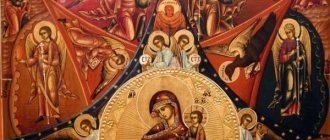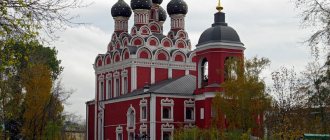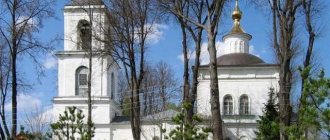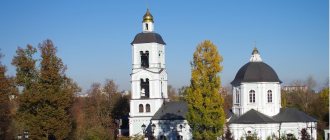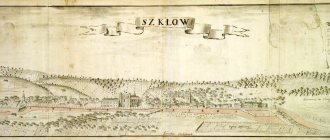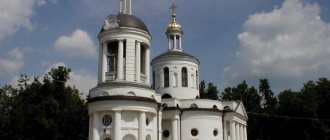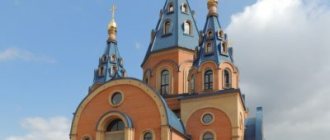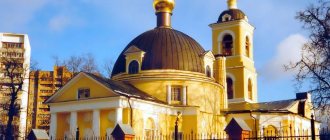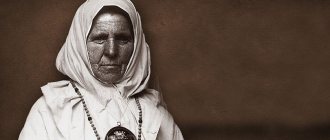Konevskaya Icon of the Mother of God: history of the temple-rehabilitation center
The Church of the Konevskaya Icon is located in the Priozersky district, in the village of Sapernoye. A beautiful and well-groomed area creates the impression of comfort and security. The temple servants and novices living here worked on its improvement. Everything that is here - fountains, flower beds, luxurious rose gardens, carved shutters and railings, stone-lined paths, and a little further away - vegetable gardens and greenhouses in perfect order - was created by the hands of ministers, parishioners and rehabilitation workers.
Want to know how it all started? Join our travels, book last-minute tours at a profit and enjoy getting acquainted with the history of the region.
So, what do we know about this unique place? The Temple of the Konevskaya Icon (Sapernoye) was founded at the end of 1994. And already on the Epiphany holidays in January 1995, the first consecration of water took place. By the decision of the parish meeting, the church was dedicated to the patroness of the Karelian land, and the Konevskaya Icon of the Mother of God in Saperny became its guardian. In the summer of 1995, the temple was consecrated, and the life of another center of spiritual revival began on the Priozersk land.
Transfiguration in the Temple – Temple of the Konevskaya Icon of the Mother of God
The Konevskaya Icon of the Mother of God, whose feast day is celebrated on July 23, is the patroness of the monastery. A year after the consecration of the church in the village. A sapper miracle happened - the icon became myrrh-streaked. The abbots of the temple perceived this phenomenon as a blessing, which became the decision to open a center for the rehabilitation of alcohol and drug addicts.
Since April 1996, a spiritual hospital has been operating at the church, which has become the first diocesan rehabilitation center in Russia.
Many suffering people come to Sapernoe: the Church of the Konevskaya Icon of the Mother of God gives hope for life and revival.
Rehabilitation – Temple of the Konevskaya Icon of the Mother of God
Skete of the Konevskaya Icon of the Mother of God
Around 1393/1394, the Monk Arseny established a monastery on the shore of a small bay in the south of the island. Monastics from the Konevets monasteries, located in Filippova Lakhta and on the Holy Hill, move here. And in 1398, the Church of the Nativity of the Blessed Virgin Mary was built here. The bay itself (or Lakhta) from the 15th century began to be called Vladychna in memory of the fact that the ship of St. Euthymius, Archbishop of Novgorod, landed here in 1444. Here he was met and escorted by the inhabitants of the monastery. By that time, the monastery itself was already in another, higher place. In memory of the bishop’s visit to the island, a cross was erected on the shore of the bay. Later, a small wooden hexagonal chapel measuring 5 by 6 meters and 3 meters high to the cornice was erected here. The building was covered with a dome covered with tinplate. Inside the chapel there was a wooden iconostasis painted blue, and the ceiling was covered with an image of the Holy Spirit in the form of a dove.
Church of the Konevskaya Icon of the Mother of God and chapel.
Rice.
from the album “Views and Descriptions of the Konevsky Monastery” (edition 1876). By the 19th century, the Vladychnaya (or in the local manner - Lodyzhnaya) Lakhta was heavily covered with sand and stones, its banks were overgrown with grass and moss. True, opposite the bay there was a place traditional for the monastery, where a large seine was cast and whitefish and vendace were caught. History is silent about the name of the initiator of the construction of an entire monastery next to the dilapidated chapel. Perhaps it was Archimandrite Israel himself. At the beginning of 1874, the Construction Department of the St. Petersburg Provincial Government carefully examined the design of the temple and its services. The author of the project was the architect who had already worked at Konevets - Ivan Blazheeveich Slupsky. The foundation of the monastery took place on June 30 (July 12), 1874. The complex was built at the expense of three St. Petersburg philanthropists: the well-known church donor in the North-West of Russia, Efrem Nikiforovich Sivokhin, and the merchants Martynov and Nikolaev. The consecration of the monastery took place in 1876.
Skete in the 1910s
Its center was a church built in brick on a powerful granite plinth, the appearance of which is a tribute to the passion for the so-called “Russian style of the 17th century” that was characteristic of that time. This is a small stone pillarless temple with a vestibule, distinguished by its rich patterns. The elegance of the building is given by the 3-part kokoshniks with a keeled top, the finishing facades of the quadrangle, 8-pointed crosses laid out in brick, crackers, flies, arches, and rustication. The length of the temple is 18 m, the width is 7.5 m, and the height to the cornice is 8.5 m. The temple is crowned with a five-domed structure, traditional for Russian churches. The central dome is much more massive than the others, which, nevertheless, gives the whole church a beautiful appearance. The remaining domes are small, with small onion-shaped domes. Above the porch there is a small single-tier bell tower with a tent, also crowned with a small dome.
Temple interior. 1910s
The inside of the church was distinguished by rich decoration. The 3-tiered iconostasis, “cut into malachite,” with features of the Russian style, was decorated with gilded carvings.
Next to the church there is a two-story cell building in the “brick” style, covered with a simple roof. The building looks quite modest in relation to the temple. The entire small interior space is surrounded by a high brick fence with a planked roof. At the corners of the fence there are turrets with a hipped roof and domes with crosses. On the western side of the fence there are three-part gates with keeled arches.
The life of the inhabitants of the monastery was subject to general rules: year-round prayer, reading the Gospel and patristic books; in summer - gardening, fishing, preparing firewood; in the fall - harvesting vegetables; in winter - handicrafts. On the day of the temple holiday, July 10/23, at the beginning of the Divine Liturgy, a procession of the cross was made here from the monastery. The Konevsky monastery was rarely visited by pilgrims, who, as a rule, spent little time on the island on their way to Valaam. However, the small temple was clearly visible when approaching the island. He also accompanied the pilgrims. Ivan Shmelev in his travel essays “On the Rocks of Valaam” describes his departure from the island as follows: “The monk throws off the pier and watches how our steamer, raising foam with its propeller, slowly moves away from the pier. The forest-covered Konevets goes further and further. The cathedral is white on the green wall of the forests. To the right you can barely see a quiet hermitage, covered with a thick net of fog.”
Finnish soldiers at the monastery. Photo of February 14, 1942 (from the SA-Kuva website).
Preparation of skis in the monastery. Photo of February 9, 1943 (from the SA-Kuva website).
The normal life of the skete, like the entire monastery, was disrupted by the war in 1939. The Konevsky Church was not damaged, but the inhabitants of the monastery, like the rest of the brethren, were forced to leave it due to the transition of the island to the Soviet Union. The decoration and iconostasis of the temple remained virtually untouched. However, when the monks returned to the island during the Great Patriotic War, they discovered that the icons in the temple had been cut with knives, and near the monastery there were chopped icons and torn books. Thus the monastery suffered the same fate as the entire monastery.
The military testing ground of the USSR Navy, located on the island, used the temple for firing torpedoes, for which part of the wall was destroyed and a furnace was built inside. In the fishing area opposite Vladychnaya Bay, nuclear power plants were tested. By the time the monastery was transferred to the Russian Orthodox Church, the buildings of the Konevsky Church and the cell building were in a deplorable state.
In 2002, the abbot of the Konevsky Monastery, Abbot Isidor (Minaev), transferred the Konevsky monastery to the St. Sophia Cathedral of Tsarskoe Selo, and the process of rebuilding the temple and clearing the territory of numerous traces of the military presence began.
Even before this, the Tsarskoye Selo deanery, with the blessing of the monastery authorities, began to organize a children’s camp on the shore of Vladychnaya Bay. During the first seasons, the children lived in tents and cooked over fires. During this period, the tradition of annual children's gatherings on Konevets Island was born. In 2007, it was decided to move the camp directly to the walls of the Konevsky monastery. Small houses were built for the children, and a kitchen was organized in the cell building. In 2011, with the blessing of the dean of the Tsarskoe Selo district, Archpriest Gennady Zverev, the Konevets children's camp was transferred under the guardianship of the parish of the Catherine Cathedral of Tsarskoe Selo. Nowadays, more than 250 children of different ages come to the island every summer: from 8 to 16 years old. There are six shifts in the camp during the season. Each shift is cared for by a confessor from among the clergy of the Tsarskoe Selo deanery. The priest is a spiritual guide for both children and adults. Divine Liturgy, morning and evening prayers in the Konevsky Church, obediences, prayers before meals - all this allows you to strengthen your faith, its significance and significance.
Thus, the monastery, restored over 13 years, became a “children’s abode.” In 2015, the copy of the Konevskaya Icon of the Mother of God, which before the destruction of the monastery was in the temple iconostasis, returned to the monastery. And on September 3, 2015, the consecration of the skete church took place. It was performed by Bishop Ignatius of Vyborg and Priozersk. A particle of the relics of the holy martyr John of Tsarskoe Selo was placed into the base of the throne, thereby strengthening the connection between Konevets and Tsarskoe Selo.
Church of the Konevskaya Icon of the Mother of God: how to get there from St. Petersburg
Just a little over an hour, and the domes of the church in Saperny are already glistening in the sun. You can go on your own, or you can join tours with Sharm Travel. In this case, in one day off you will see not only the famous temple, but also many other interesting tourist sites:
- Vyborg.
- Ruskealu.
- Ladoga lake.
- Famous waterfalls, etc.
Perhaps for some, a trip to Sapernoye will be an opportunity not only to see a cozy, almost paradise-like garden, but also to feel the harmony of the place. You will be able to understand why people who have almost no hope left for a normal life in society come here to heal their sick souls.
Who knows, maybe your review of this place will become for someone the very straw that a drowning man clutches at. Come, touch the shrine, share your travel impressions with Sharm Travel.
Lost souls. How drug addicts are saved in the Church of the Konevskaya Icon of the Mother of God
Over a quarter of a century, 2.5 thousand people were healed at the monastery.
Article 228 of the Criminal Code. It is called "narcotic". A quick glance at the trials is enough to understand that more than half of the sentences are passed under Article 228.
Is drug addiction a disease or not? If yes, can it be cured? Orthodox priest Father Sergius is confident that drug addiction is not a disease. This is passion. It cannot be cured. You can only fight it.
A quarter of a century ago, Father Sergius, with two people healed on the Orthodox island of Konevets, arrived in the village of Sapernoye, in an open field, and began to build a temple. Today, the “Abode of Healing” is known throughout the country. More than 2.5 thousand people were saved. 2.5 thousand is the population of a small town. About the place where a miracle happens. Special report by Vladislav Belyakov, correspondent of the St. Petersburg TV channel.
Temple of the Konevskaya Icon of the Mother of God. A small church a hundred kilometers from St. Petersburg. Built in the mid-90s. This is where real miracles happen - drug addicts are healed.
ARCHPRIESTER SERGY, rector of the Church of the Konevskaya Icon of the Mother of God, founder and director of rehabilitation: “There are so-called helping professions: the Ministry of Emergency Situations, law enforcement agencies, doctors and priests. We are a helping profession.”
The rector of the temple, Father Sergius, is a unique person. Retired Colonel of the Ministry of Internal Affairs, candidate for master of sports in boxing, three higher educations. At the peak of his career, he left the police to save drug addicts.
ARCHPRIESTER SERGY, rector of the Church of the Konevskaya Icon of the Mother of God, founder and head of rehabilitation:
“I just realized that law enforcement agencies are needed, but these are tops, but roots are needed. And the roots are the human soul, this is the human heart.”
At first, the priest saved lost souls on the Orthodox island of Konevets on Ladoga. In 1994, I came to Sapernoe with two wards. They began to build the temple on their own. A year later, the first miracle happened there - the icon in whose honor the church was named became filled with myrrh. It was written by a former drug addict.
ARCHPRIESTER SERGY, rector of the Church of the Konevskaya Icon of the Mother of God, founder and director of rehabilitation:
“Myrrh, the face of the Savior and the Mother of God, flows abundantly from the temple. Just like perspiration, just as a person becomes covered in perspiration at a high temperature, his face was covered in small droplets. We regarded this as strengthening the young parish in the faith and a blessing for its future path.”
Drug addiction is not a disease at all, Father Sergius is sure. Therefore, you need to fight it with faith and prayer.
ARCHPRIESTER SERGY, rector of the Church of the Konevskaya Icon of the Mother of God, founder and director of rehabilitation:
“Drug addiction is a passion. And the fight against passions is the area of church asceticism. Accordingly, the healing of people who come to church and want to receive healing through faith, through communication with God, they receive it.”
He remembers everyone who went through rehabilitation here. The most difficult case was with a girl who was abused in early childhood. I grew up without a father, with a mother who was a drug addict. In her youth she became a prostitute.
ARCHPRIESTER SERGY, rector of the Church of the Konevskaya Icon of the Mother of God, founder and director of rehabilitation:
“Her clients were sadists and masochists who beat and strangled her. When she came to us, she was deaf and dumb. That is, she didn’t even talk, she just sat and swayed. Then she started talking. Then little by little we prepared it. Well, basically, in three months.”
Labor is the key to successful rehabilitation. In Saperny there is a farm and a vegetable garden, a sawmill, carpentry and metalworking shops.
— I have never held a welder or a grinder in my hands in my life. I just learned all this here.
Alexander, 25 years old. I've been at the monastery for a year now. I became addicted to drugs at school. He managed to make a career in a bank, but he could not cope with his addiction.
ALEXANDER, novice of the Church of the Konevskaya Icon of the Mother of God:
“Here I realized that the problem is not only drugs, but passions in general.”
Egor, 26 years old. We've been addicted for almost ten years. The wife left, took the child, the parents turned away.
EGOR, novice of the Church of the Konevskaya Icon of the Mother of God:
“I have not gotten rid of addiction. I just made a clear decision for myself that I no longer want to use drugs, but I want to use them almost every day.”
An hour's drive from Saperny there is a women's monastery. Father Sergius and Father Alexander are met by novices to receive a blessing.
The rehabilitation of women also takes place through the labors of the righteous - they make candles, sew, and cook food.
Ksenia, 22 years old. In the past - hard drugs. He considers four months in the monastery a miracle.
KSENIA, novice of the Church of the Konevskaya Icon of the Mother of God:
“Previously, for me, the Orthodox were some sad, incomprehensible people who stood for a long time, praying for something, it was all so strange. When you participate in the sacraments, receive communion, confess, when you understand that this makes you feel better, then all questions disappear by themselves.”
VLADISLAV BELYAKOV, correspondent:
“To get to out-of-town rehabilitation, you need to go through the motivational stage. Drug addicts go to a day hospital for a month. It is located here - right on the territory of the Church of the Resurrection of Christ.
If hospital staff see that a person really wants to take the path of correction, he will be sent to Sapernoe. The statistics are astounding: 80 percent of patients who undergo this treatment never return to drug use.”
Under the leadership of Father Sergius there are four. They can accommodate no more than 40 people at a time.
ARCHPRIESTER SERGY, rector of the Church of the Konevskaya Icon of the Mother of God, founder and director of rehabilitation:
“For at least two years, we monitor the life of each person: does he want sobriety, has he broken down, does he go to the church where he works, got married and was baptized. Eight out of ten do not return to drugs.”
Abodes of healing for almost a quarter of a century. More than two and a half thousand people underwent rehabilitation there. About two thousand - and this is the population of a small town - were freed from addiction forever.
Subscribe to us on Yandex.News, Instagram and VKontakte.
Read us on Telegram.
Photo and video: TV channel “St. Petersburg”
